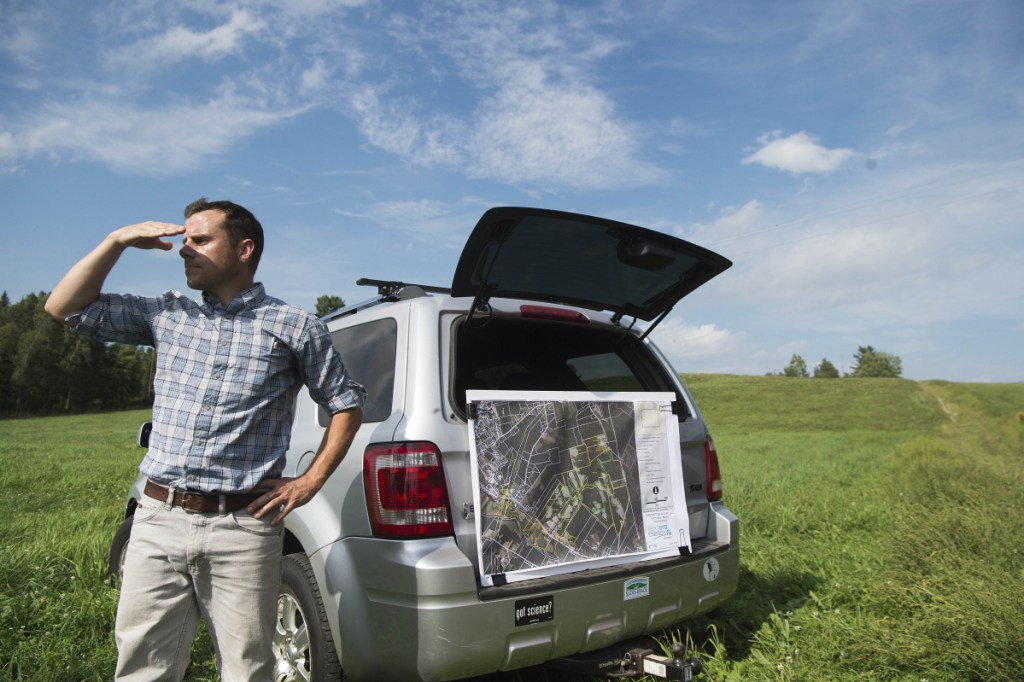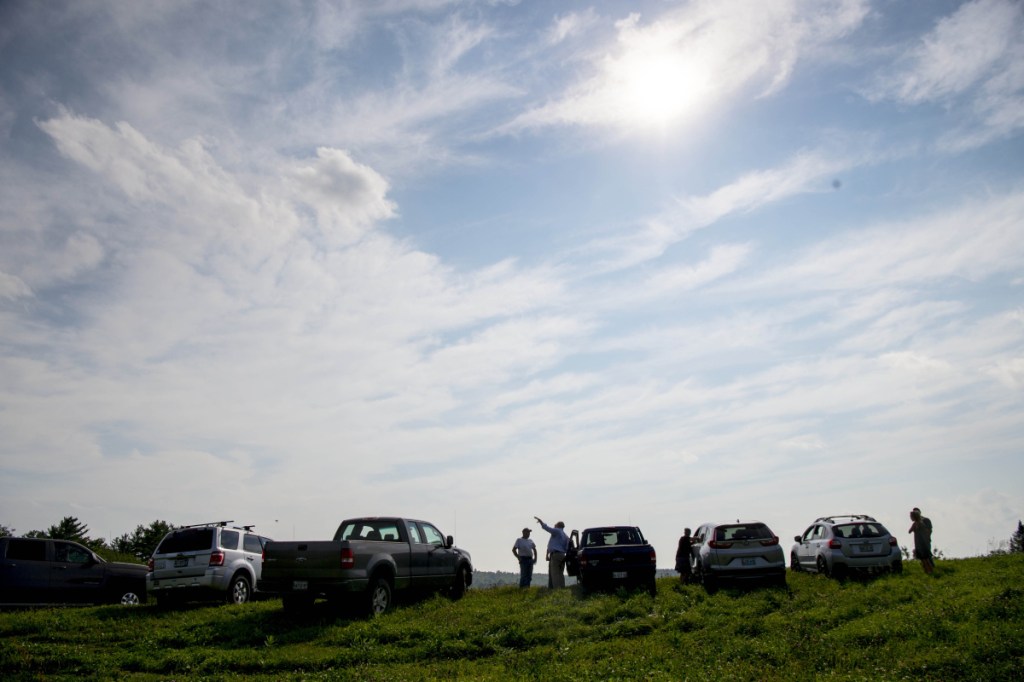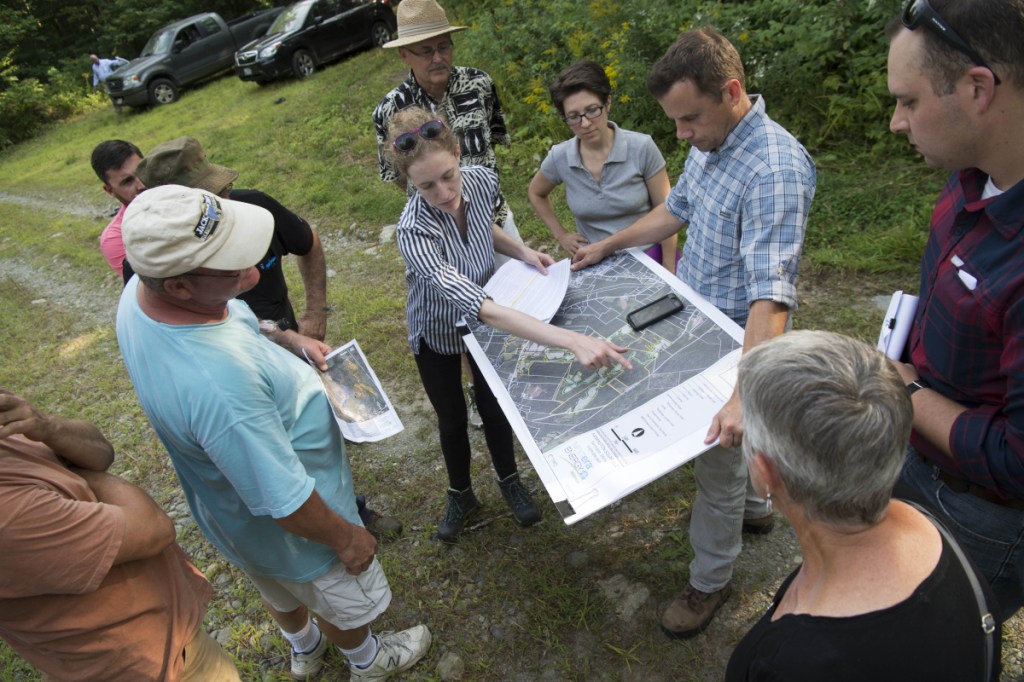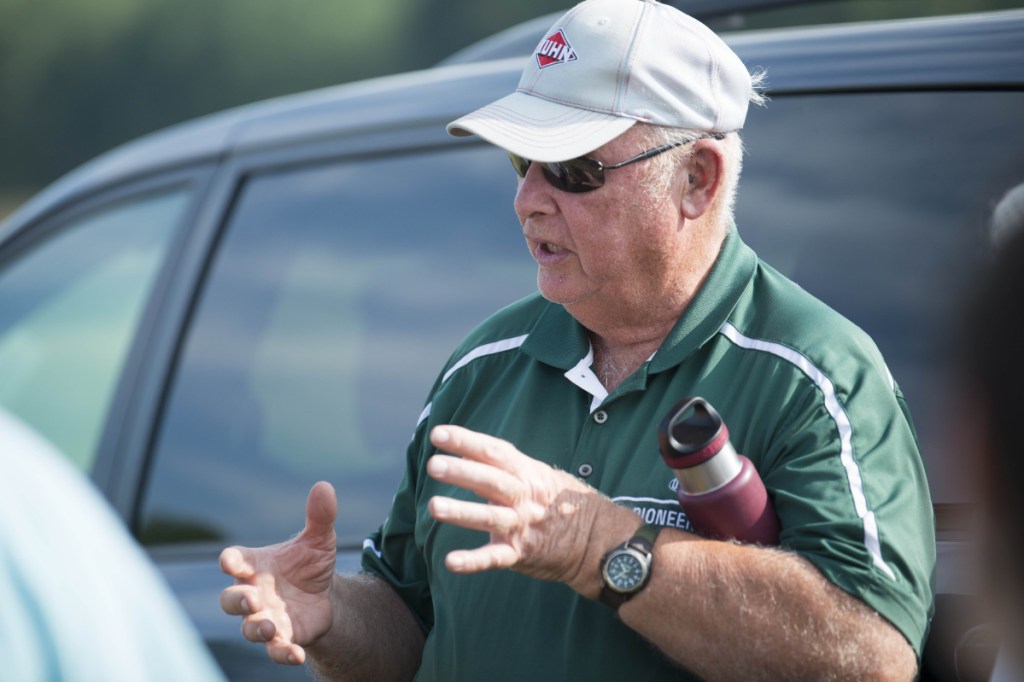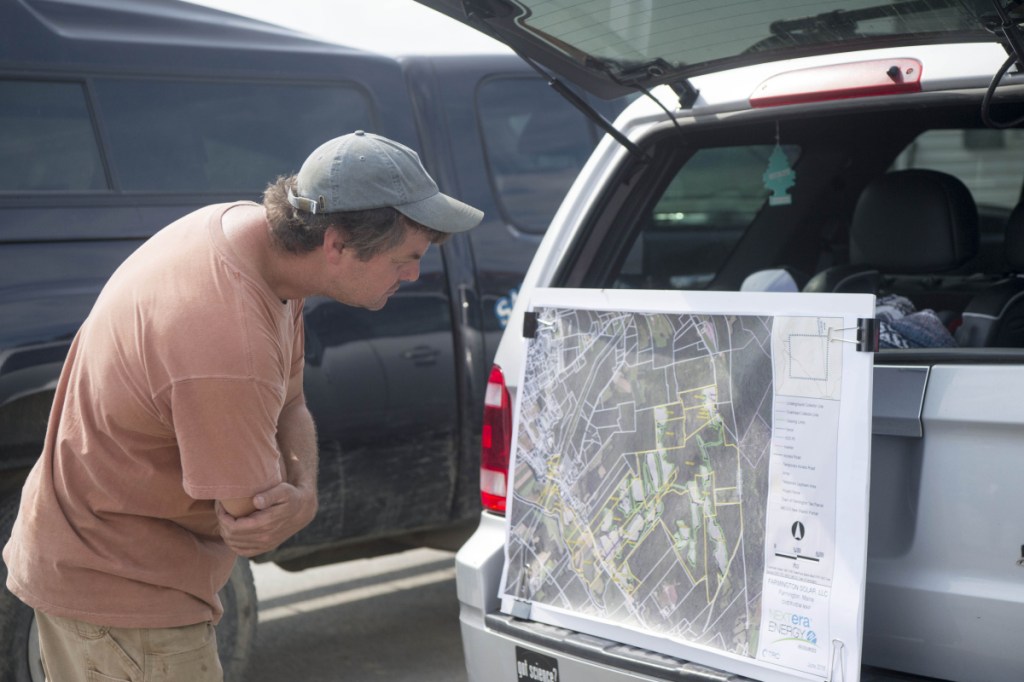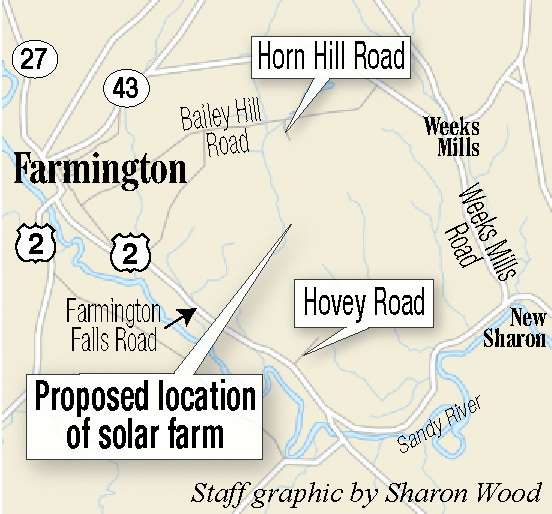FARMINGTON — More than a dozen people, including local officials, toured the site of a proposed 490-acre solar farm Wednesday, taking the opportunity to ask representatives from NextEra Energy about their plans for what the company says will be the largest solar farm in New England.
“We want people to have a full understanding of how this project will work,” said Project Manager Liz Peyton during the start of the walk-through at Sandy River Farms, which will host a bulk of the solar project.
The walk-through, which took place at the request of the Farmington Planning Board, included stops at the farm off U.S. Route 2 as well as a swath of woods on Horn Hill Road that will host the remainder of the project. A stop also was made at the existing Central Maine Power Co. substation off U.S. Route 2, where the plan would be to build a transformer and connect to the substation.
“It’s great because it gives us a sense of realization,” said Planning Board Chairman Clayton King. “There’s nothing like walking a site and seeing what’s proposed.”
King said he could not comment at the walk-through on what kind of feedback he has heard from residents regarding the project, but said the planning board will likely be considering applications from Florida-based NextEra Energy and its subsidiary, Farmington Solar LLC, over the next few months. Approval from the Maine Department of Environmental Protection is also needed.
The estimated cost of the project is $110 million, and if built it is expected to generate about $2 million in annual tax revenue for Farmington. It would include 301,300 solar panels that would generate about 75 megawatts of electricity.
“They’ve presented a very detailed plan and there are a lot of details still to be worked out,” King said.
Earlier this month, the company submitted its applications for a handful of permits it will need from local authorities to the Planning Board at a meeting where board members expressed concerns about de-commissioning of the project, while some abutters expressed concerns about their property values and the health effects of living next to a large-scale solar farm.
On Tuesday, officials got a close-up look at the land, where some abutters are concerned — a 13-acre parcel off U.S. Route 2 that belongs to Sandy River Farms and its owner, Bussie York. While a bulk of the farmland that will be used for the project is in pastures on the northeast side of U.S. Route 2, a small parcel to the northwest also would be used, and the electricity would be transmitted underground.
Steve Drosdik, who lives nearby on Stanwood Park Circle, said the addition of the solar panels, though they will be shielded by trees or other greenery planted along the perimeter of the parcel, will mean he loses his view of the Sandy River and the green field adjacent to his house.
“I’m also wondering about the value of my home,” he said. “What is the recourse if someone says they want to buy the house but they don’t want to live next to a solar farm?”
York, who will be leasing his land to NextEra if the project is successful, has said it will help his struggling dairy farm stay sustainable, in addition to providing a huge boost in tax revenue to the town.
He thanked residents such as Drosdik for being good neighbors Wednesday, though he also raised a concern of his own — that the land be left in a condition allowing it to be restored to agricultural land if it is no longer needed as a solar farm years down the road.
The layout of the project — scattered among three plots — is meant to accommodate wetlands and floodplains along the river, and representatives from NextEra said the maintenance of the project and use of the land should not interfere with the ability to restore the land someday for agricultural purposes.
Peyton, the project manager, said she appreciates residents and neighbors sharing their concerns and questions. “I want to keep this an open conversation,” she said. “This is a new kind of project for Maine and it’s a new kind of project for New England. We want to make sure we’re in contact with you and making sure you know what we’re proposing, let you know our setbacks and being able to plant as tall of plantings as possible to avoid the visual impact.”
NextEra does plan to clear some forested areas along Horn Hill Road, which, along with the farmland, make up the two main parts of the project.
Robert Zundel, who runs a construction and landscaping business on property abutting the site and plans to build a house there someday, said he was curious to know whether Horn Hill Road, currently a discontinued town road, would be improved and what the access would be like during and after construction of the project.
“I’m certainly not against it,” Zundel said. “I would like to know more and know what the impacts on the road will be and make sure it’s not gated. Right now it’s a nice, quiet area. It will certainly be a change.”
Rachel Ohm — 612-2368
Twitter: @rachel_ohm
Send questions/comments to the editors.


